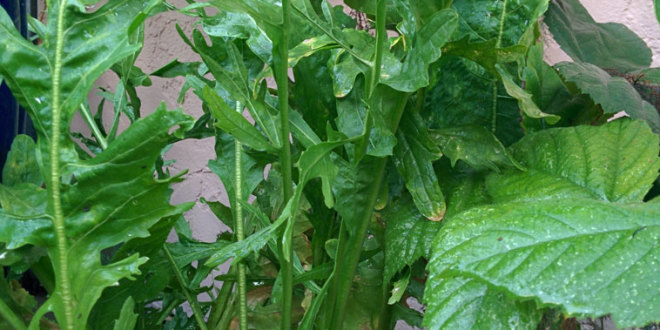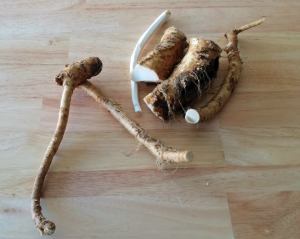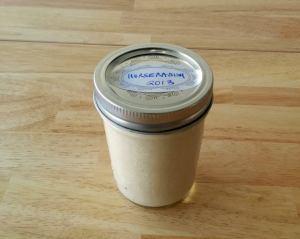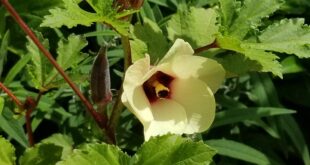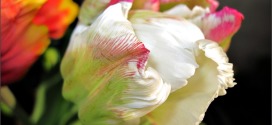Horseradish, Armoracia rusticana. Horseradish is easy to grow, provides pretty foliage, and produces that wonderful hot sauce. it can grow in a one foot patch and only 8 to 12 inches of soil. Horseradish roots taste better if they experience a night or two of frost. In Sunnyvale, this typically means late December or early January. But if you need horseradish before then, just go ahead and dig it up.
How to Plant Horseradish
Step 1: Dig up the root
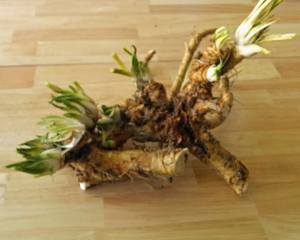
Horseradish roots taste better if they experience a night or two of frost. In Sunnyvale, this typically means late December or early January. But if you need horseradish before then, just go ahead and dig it up.
Typically you need to dig 6 to 8 inches down to bring up most of the horseradish roots. A spade is more efficient but rounded shovels and bulb-scoops also work.
Leave some for next year! Break off a smaller part of the root and replant it. This way you will get horseradish next year.
Step 2: Clean the root
Step 3: Grate the roots
Details
Genus: Armoracia (ar-mor-AY-shee-uh) (Info)
Species: rusticana (rus-tik-AH-nuh) (Info)
Synonym:Cochlearia armoracia
Synonym:Nasturtium armoracia
Synonym:Radicula armoracia
Synonym:Rorippa armoracia
Synonym:Armoracia lapathifolia
Category:
Vegetables
Herbs
Height:
12-18 in. (30-45 cm)
Spacing:
15-18 in. (38-45 cm)
Hardiness:
USDA Zone 3a: to -39.9 °C (-40 °F)
USDA Zone 3b: to -37.2 °C (-35 °F)
USDA Zone 4a: to -34.4 °C (-30 °F)
USDA Zone 4b: to -31.6 °C (-25 °F)
USDA Zone 5a: to -28.8 °C (-20 °F)
USDA Zone 5b: to -26.1 °C (-15 °F)
USDA Zone 6a: to -23.3 °C (-10 °F)
USDA Zone 6b: to -20.5 °C (-5 °F)
USDA Zone 7a: to -17.7 °C (0 °F)
USDA Zone 7b: to -14.9 °C (5 °F)
USDA Zone 8a: to -12.2 °C (10 °F)
USDA Zone 8b: to -9.4 °C (15 °F)
USDA Zone 9a: to -6.6 °C (20 °F)
USDA Zone 9b: to -3.8 °C (25 °F)
Sun Exposure:
Full Sun
Sun to Partial Shade
Light Shade
Danger:
Unknown – Tell us
Bloom Color:
White/Near White
Bloom Time:
Mid Summer
Foliage:
Deciduous
Other details:
May be a noxious weed or invasive
Average Water Needs; Water regularly; do not overwater
Soil pH requirements:
6.1 to 6.5 (mildly acidic)
6.6 to 7.5 (neutral)
Patent Information:
Non-patented
Propagation Methods:
By dividing rhizomes, tubers, corms or bulbs (including offsets)
Seed Collecting:
N/A: plant does not set seed, flowers are sterile, or plants will not come true from seed
Read more: http://davesgarden.com/guides/pf/go/840/#ixzz3Gil6TfOu
